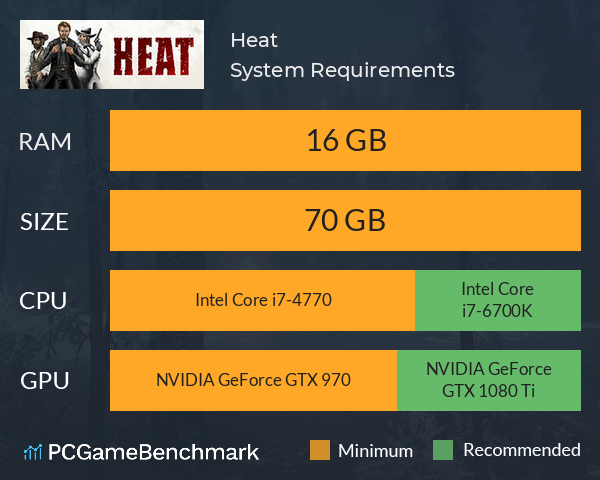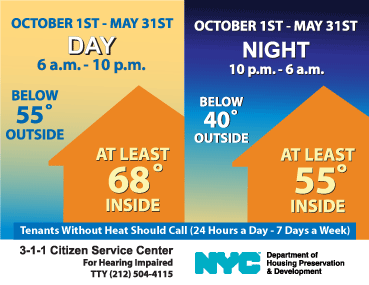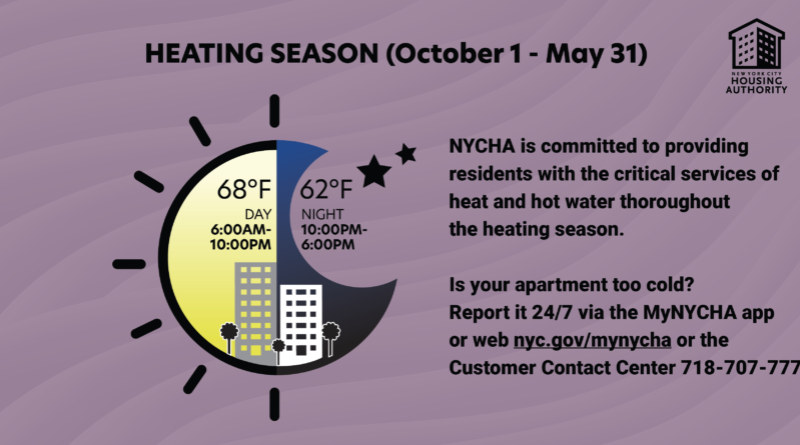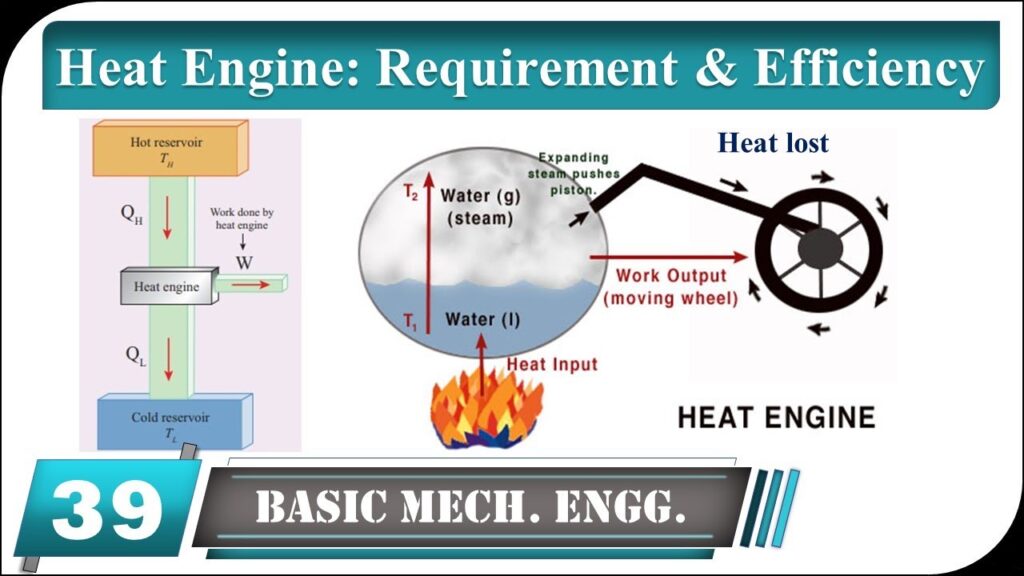So, have you ever wondered what it takes for a piece of content to become popular and generate a lot of heat online? It’s quite fascinating, really. In this article, we’re going to dive into the world of content and heat requirements, exploring the key factors that contribute to the success of online content. Whether you’re a writer, marketer, or just someone curious about the inner workings of viral content, this is something you definitely want to learn more about.
Now, let’s talk about content and heat requirements in more detail. When it comes to creating content that goes viral, there are a few important elements to consider. The first is the relevance and relatability of the content to the target audience. People are more likely to share content that resonates with them on a personal level, so it’s crucial to tap into their emotions and address their needs or interests. Additionally, the format and delivery of the content play a significant role. Eye-catching visuals, compelling storytelling, and engaging writing can all contribute to creating share-worthy content. But that’s just the tip of the iceberg! In the rest of this article, we’ll explore even more strategies and techniques that can help you understand and utilize the content and heat requirements to your advantage. So, keep reading and get ready to master the art of creating viral content!

And Heat Requirements
When it comes to staying comfortable in your living or working space, understanding heat requirements is essential. Heat requirements refer to the amount of heat needed to maintain a certain level of warmth and comfort in a building or for a specific purpose. In this article, we will delve into the definition of heat requirements, the factors that affect them, different types of heat requirements, and their importance in various settings.
Definition of Heat Requirements
Heat requirements can be defined as the amount of heat energy needed to maintain a desired temperature level in a space. This can vary depending on factors such as the size of the building, insulation levels, geographical location, and the specific purpose of the space. Heat requirements are typically measured in British Thermal Units (BTUs) or kilowatts (kW).
Factors Affecting Heat Requirements
Several factors can affect the heat requirements of a building or a specific area. These factors include:
-
Climate and temperature: The climate and geographical location of a building play a significant role in determining the heat requirements. Buildings in colder climates require more heat to maintain comfortable temperatures compared to those in warmer regions.
-
Building insulation: The level and quality of insulation in a building greatly affect its heat requirements. Well-insulated buildings can retain heat more effectively, reducing the need for additional heating.
-
Building size and layout: The size and layout of a building impact the heat requirements. Larger buildings typically require more heat to maintain a consistent temperature throughout the entire space.
-
Occupancy and activity levels: The number of occupants in a building and the type of activities being carried out can influence heat requirements. Spaces with high occupancy or activities that generate heat, such as manufacturing processes, may require additional heating.
-
Ventilation and air exchange: Proper ventilation is crucial for maintaining indoor air quality. However, excessive air exchange can lead to heat loss, increasing heat requirements.
Types of Heat Requirements
Heat requirements can be classified into various types based on their purpose and application. Some common types include:
-
Residential heat requirements: Residential buildings have specific heat requirements for ensuring comfort and energy efficiency. Determining heat loss, choosing the right heating system, and proper thermal insulation play a vital role in meeting residential heat requirements.
-
Commercial heat requirements: Commercial buildings, such as offices, retail spaces, and hotels, have unique heat requirements influenced by factors like occupancy, zoning, and HVAC systems.
-
Industrial heat requirements: Industrial settings often have specific heating challenges due to the nature of their operations. Process heating systems and energy recovery mechanisms are essential for meeting industrial heat requirements.
-
Agricultural heat requirements: Heat plays a crucial role in agricultural settings for maintaining optimal conditions for crops, livestock, and greenhouses. Livestock heating, crop drying, and storage, and greenhouse heating are common agricultural heat requirements.
-
Transportation heat requirements: Ensuring thermal comfort for passengers and efficient heating solutions for vehicles are significant heat requirements in the transportation sector.
Understanding the different types of heat requirements allows for tailored heating solutions that address specific needs.
Importance of Heat Requirements
Understanding and meeting heat requirements is essential for several reasons. Let’s explore some key reasons for the importance of heat requirements.
Ensuring Optimal Performance
Meeting heat requirements is vital for ensuring the optimal performance of various systems and equipment. In industrial settings, accurate heat requirements ensure smooth operation and efficiency of manufacturing processes. Similarly, in residential and commercial buildings, meeting heat requirements guarantees the effective functioning of heating systems and the overall comfort of occupants.
Energy Efficiency
Understanding heat requirements helps optimize energy usage and promote energy efficiency. By accurately calculating heat requirements, heating systems can be designed and operated efficiently, reducing energy consumption and minimizing carbon emissions. Energy-efficient heating solutions also result in cost savings for both residential and commercial users.
Comfort and Safety
Meeting heat requirements is crucial for maintaining a comfortable and safe living or working environment. Insufficient heating can lead to discomfort, while excessive heating can cause discomfort and health issues like dehydration and heat stroke. Understanding heat requirements allows for precise temperature control, ensuring a comfortable and safe indoor environment for occupants.

Calculating Heat Requirements
Accurately calculating heat requirements is the first step towards meeting them effectively. This involves determining the heating load, sizing heating systems accordingly, and considering the specific needs of different areas within a building or space.
Determining the Heating Load
The heating load is the amount of heat energy required to maintain the desired indoor temperature. Calculating the heating load involves factors such as the size of the space, insulation levels, climate conditions, and occupancy patterns. Heat load calculation tools, software, or consulting professionals can assist in accurately determining the heating load.
Sizing Heating Systems
Once the heating load is determined, appropriate heating systems can be selected and sized accordingly. Oversized heating systems can lead to energy wastage, while undersized systems may struggle to meet the heat requirements. Working with heating professionals ensures that heating systems are sized correctly for optimal performance and efficiency.
Considerations for Different Areas
Different areas within a building or space may have varying heat requirements. For example, areas with large windows may experience higher heat loss and require additional heating. On the other hand, areas with lower insulation levels or higher occupancy may need more heat to maintain desired temperatures. Considering these variations in heat requirements allows for targeted heating solutions in different areas.
Methods of Meeting Heat Requirements
Meeting heat requirements can be achieved through various methods, depending on the specific needs and constraints of a building or space. Let’s explore some common methods of meeting heat requirements.
Central Heating Systems
Central heating systems are a popular method for meeting heat requirements in residential, commercial, and even industrial settings. These systems generate heat in a central location and distribute it throughout the building using ducts, pipes, or other distribution mechanisms. Central heating systems offer efficient heat distribution and temperature control for large areas.
Individual Heating Units
Individual heating units, such as electric heaters, radiators, or space heaters, provide localized heating for specific areas or individual rooms. These units can be controlled independently, allowing occupants to adjust temperature settings based on their needs. Individual heating units offer flexibility and energy savings, particularly in areas with varying heat requirements.
Renewable Energy Sources
With the growing emphasis on sustainability, renewable energy sources are increasingly being used to meet heat requirements. Solar thermal systems, geothermal heat pumps, and biomass boilers are examples of renewable energy solutions for heating. These options offer environmental benefits by reducing reliance on fossil fuels and minimizing carbon emissions.

Heat Requirements in Residential Buildings
Residential buildings have specific heat requirements that focus on ensuring comfort, energy efficiency, and thermal insulation. Understanding and meeting these requirements is essential for a comfortable living environment. Let’s explore some key considerations for residential heat requirements.
Determining Heat Loss
Assessing heat loss is crucial for determining the heat requirements in residential buildings. Factors such as insulation levels, building size, windows, and doors influence heat loss. Conducting a heat loss analysis helps identify areas where heat escapes, allowing for targeted insulation improvements and efficient heating system design.
Choosing the Right Heating System
Residential heat requirements can be met through various heating systems, including central heating systems, individual heating units, or a combination of both. The choice of the heating system depends on factors like the size of the house, location, energy efficiency goals, and budget. Consulting heating professionals can help determine the most suitable system for meeting residential heat requirements.
Thermal Insulation
Proper thermal insulation is crucial for meeting residential heat requirements. Insulation helps reduce heat loss and retain heat within the building, resulting in energy savings and improved comfort. Key areas for insulation include walls, attics, floors, and windows. Investing in high-quality insulation materials and installation ensures optimal thermal performance and meeting heat requirements efficiently.
Heat Requirements in Commercial Buildings
Commercial buildings have unique heat requirements influenced by factors like occupancy, zoning, and HVAC systems. Understanding and meeting these requirements are vital for creating comfortable and productive working environments. Let’s explore some key considerations for commercial heat requirements.
Factors Influencing Heat Demand
Commercial buildings have diverse heat demands due to variations in occupancy, activities, and types of spaces (e.g., offices, meeting rooms, kitchens). Considering these factors when determining heating requirements allows for precise temperature control and energy-efficient operation.
Zoning and Control Systems
Commercial buildings often require different heat settings in various areas. Zoning and control systems allow for customized temperature control in different zones, optimizing energy usage and meeting specific heat requirements. These systems can incorporate sensors, timers, or occupancy-based controls to ensure efficient and comfortable heating throughout the building.
HVAC Systems
Heating, ventilation, and air conditioning (HVAC) systems are commonly used in commercial buildings to meet heat requirements. HVAC systems provide heating, cooling, and ventilation capabilities, ensuring a comfortable indoor environment. Designing and operating HVAC systems efficiently is essential for meeting specific heat requirements while minimizing energy consumption.

Heat Requirements in Industrial Settings
Industrial settings often have specific heating requirements due to the nature of their operations. Efficient heat management in industrial settings is crucial for maintaining productivity, ensuring worker safety, and minimizing energy waste. Let’s delve into some key considerations for industrial heat requirements.
Unique Heating Challenges
Industrial settings may present unique heating challenges due to factors like large spaces, high ceilings, ventilation requirements, and heat-generating processes. Understanding these challenges and identifying the specific heat requirements is essential for selecting and implementing suitable heating solutions.
Process Heating Systems
Process heating systems are commonly used in industrial settings where specific temperatures are required for manufacturing processes. These systems involve the use of industrial boilers, furnaces, or ovens to generate heat for specific applications. Designing efficient process heating systems is crucial for meeting heat requirements while optimizing energy usage and productivity.
Energy Recovery
Industrial settings often generate excess heat through various processes. Energy recovery systems can capture and reuse this waste heat, reducing the overall heat requirements. Heat exchangers, cogeneration systems, and waste heat recovery systems are examples of energy recovery mechanisms that can help meet industrial heat requirements sustainably.
Heat Requirements for Agricultural Purposes
Heat plays a crucial role in agricultural settings for maintaining optimal conditions for crops, livestock, and greenhouses. Meeting heat requirements in the agricultural sector is essential for productivity, yield, and animal welfare. Let’s explore some key considerations for agricultural heat requirements.
Livestock Heating
Maintaining appropriate temperatures is essential for the well-being and productivity of livestock. Heat requirements can vary based on factors like the type of livestock, age, weather conditions, and specific production goals. Proper heating systems and ventilation mechanisms are necessary to meet the heat requirements of different livestock species effectively.
Crop Drying and Storage
Heat requirements are essential for crop drying and storage processes. Drying crops efficiently requires precise temperature control and adequate airflow. Heat sources like grain dryers and drying rooms help meet crop drying requirements effectively. In addition, maintaining optimal temperatures during crop storage ensures quality preservation and prevents spoilage.
Greenhouse Heating
Greenhouses require precise heating to create optimal growing conditions for plants. Heat sources such as boilers, radiant heating systems, or geothermal heat pumps can meet greenhouse heating requirements. Advanced greenhouse management systems incorporate temperature sensors, thermostats, and control mechanisms to meet the specific heat requirements of different plant varieties and growth stages.

Heat Requirements in Transportation
The transportation sector also has specific heat requirements, particularly in vehicles and passenger areas. Ensuring thermal comfort, efficient heating solutions, and passenger safety are essential considerations. Let’s explore these heat requirements in more detail.
Vehicle Heating and Cooling
Maintaining comfortable temperatures inside vehicles is crucial for passenger comfort and safety. Heating, ventilation, and air conditioning (HVAC) systems in vehicles provide heating and cooling capabilities to meet the specific heat requirements of different weather conditions. Efficient HVAC systems ensure optimal temperature control, energy usage, and passenger comfort during travel.
Thermal Comfort for Passengers
Besides vehicle heating and cooling, other factors contribute to passenger thermal comfort, such as seat heaters, air vents, and insulation. Meeting heat requirements in transportation involves considering both the overall heating and cooling systems as well as individual comfort features that contribute to a comfortable passenger experience.
Efficient Heating Solutions
Energy efficiency is a significant consideration in meeting heat requirements in transportation. Optimal design and operation of heating systems, insulation, and control mechanisms help minimize energy consumption. Advanced technologies and materials, such as heat pumps and eco-friendly refrigerants, contribute to efficient heating solutions in transportation.
Identifying and Addressing Heat Loss
Heat loss can significantly impact heat requirements and energy efficiency. Identifying areas of heat loss and taking appropriate measures to address them is essential for meeting heat requirements effectively. Let’s explore some common strategies for identifying and addressing heat loss.
Thermal Imaging Technologies
Thermal imaging technologies, such as infrared cameras, can identify areas of heat loss in buildings and systems. These tools detect temperature differences and provide visuals that help pinpoint areas where insulation is inadequate, windows are inefficient, or heat transfer is occurring. Using thermal imaging technologies allows for targeted improvements to address heat loss.
Insulation and Weatherization
Improving insulation and weatherization is an effective strategy for reducing heat loss. Insulating walls, attics, floors, and roofs helps retain heat within a building, minimizing heat requirements. Weather sealing windows and doors prevents drafts and reduces heat transfer, contributing to energy efficiency.
Windows and Doors
Windows and doors are common sources of heat loss due to their potential for air leakage and inefficient glazing. Upgrading to energy-efficient windows and doors with proper insulation can significantly reduce heat loss and improve overall energy efficiency. Double or triple-glazed windows, low-emissivity coatings, and quality seals are some features to consider.
Ensuring Heat Safety and Compliance
Meeting heat requirements also involves ensuring safety and compliance with regulations. Let’s explore some key considerations for heat safety and compliance.
Fire Safety Regulations
Heating systems must comply with fire safety regulations to prevent fire hazards and ensure the safety of occupants. This includes proper installation, regular maintenance, and compliance with codes and standards. Fire safety measures such as approved fuel sources, flame-resistant materials, and smoke detection systems contribute to heat safety in buildings.
Ventilation Requirements
Proper ventilation is essential for maintaining indoor air quality, removing pollutants, and preventing the buildup of harmful gases. Heating systems should incorporate ventilation mechanisms that meet the specific requirements of the building or space. Adequate ventilation also contributes to heat distribution and ensures consistent temperatures throughout the area.
Carbon Monoxide Detection
Carbon monoxide (CO) is a toxic gas produced by incomplete combustion. Heating systems that use fossil fuels, such as gas or oil, can potentially produce CO if not properly maintained or vented. Installing CO detectors ensures early detection of this odorless and potentially lethal gas, allowing for timely intervention and prevention of CO poisoning.
Future Trends in Heat Requirements
As technology advances and sustainability becomes increasingly important, several future trends are expected to influence heat requirements. Let’s explore some of these trends.
Smart Heating Systems
Smart heating systems incorporate advanced technologies, such as sensors, automated controls, and machine learning algorithms, to optimize heat requirements. These systems can adapt to occupancy patterns, weather conditions, and user preferences, resulting in energy efficiency and enhanced comfort. Smart thermostat controls and remote monitoring are examples of smart heating system features.
Renewable Heat Solutions
The growing focus on renewable energy sources is expected to impact heat requirements greatly. Renewable heat solutions, such as solar thermal systems, ground-source heat pumps, and biomass heating, offer sustainable alternatives to traditional heating methods. These solutions contribute to reducing carbon emissions and transitioning toward a greener future.
Advanced Energy Management
Integrating heating systems with advanced energy management systems allows for precise energy monitoring, demand response capabilities, and load management. These systems optimize energy usage, promote energy efficiency, and contribute to meeting heat requirements sustainably. By analyzing data and trends, advanced energy management systems can identify opportunities for energy savings and system improvements.
Conclusion
Understanding heat requirements is essential for maintaining comfortable, energy-efficient, and safe living and working environments. Whether in residential, commercial, industrial, agricultural, or transportation settings, meeting heat requirements ensures optimal performance, energy efficiency, and thermal comfort. By considering factors such as climate, insulation, building size, and specific needs, tailored heating solutions can be implemented. Additionally, identifying and addressing heat loss, ensuring safety and compliance, and embracing future trends contribute to sustainable and efficient heat requirements. By understanding and adapting to changing needs, we can foster sustainable heating practices and create a more comfortable and energy-efficient world.